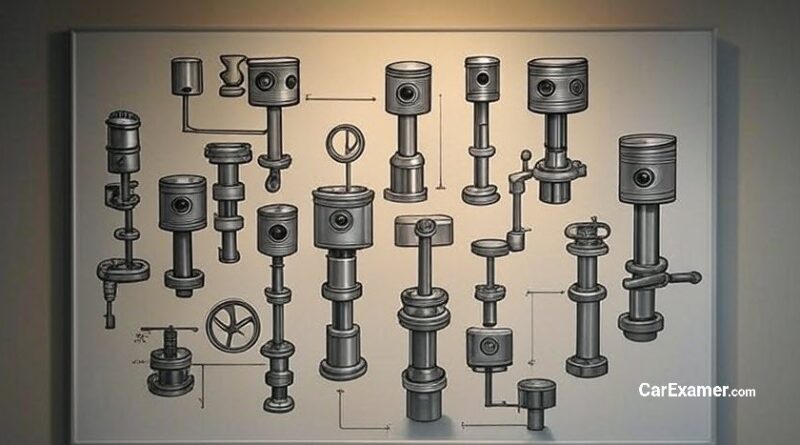Simple Guide What Is a Miller Cycle Engine?
The Miller cycle engine is a unique type of internal combustion engine that improves fuel efficiency and reduces emissions. Invented by American engineer Ralph Miller in the 1940s, the Miller cycle changes how the intake valve works compared to a standard engine. Although not as common as conventional petrol engines, it plays an important role in hybrid and high-efficiency vehicles. In this article, we explain how the Miller cycle works, what makes it different from the standard Otto cycle, and which cars use it today.
How Does a Miller Cycle Engine Work?
The Miller cycle is based on the standard four-stroke engine but with a key difference in intake valve timing. In a typical engine, the intake valve closes when the piston reaches the bottom of its intake stroke. In a Miller cycle engine, the intake valve stays open longer, even as the piston begins to move back up.
This delayed valve closing causes some of the air-fuel mixture to flow back into the intake manifold. It results in a shorter effective compression stroke and a longer expansion stroke, which improves thermal efficiency.
To maintain engine performance despite lower compression, most Miller cycle engines use turbochargers or superchargers to increase air pressure before combustion.
Miller Cycle vs Otto Cycle
| Feature | Miller Cycle | Otto Cycle |
|---|---|---|
| Intake valve timing | Closes later | Closes at bottom of intake stroke |
| Compression stroke | Shorter effective stroke | Full compression stroke |
| Expansion stroke | Longer, more efficient | Same as compression stroke |
| Typical applications | Hybrid and turbo petrol engines | Most petrol and diesel engines |
| Induction system | Usually turbocharged or supercharged | Often naturally aspirated or turbo |
Advantages of the Miller Cycle
- Improved fuel economy
Because the engine does less work during compression, it uses less energy and fuel. - Lower emissions
Cooler combustion temperatures reduce harmful nitrogen oxide (NOx) emissions. - Better efficiency at high loads
The engine can extract more energy during the expansion stroke. - Ideal for hybrid systems
Works well with electric assistance where low-end torque is needed.
Disadvantages of the Miller Cycle
- Reduced low-end torque
Engines feel less powerful at low RPM unless turbocharged. - Requires forced induction
Needs a turbo or supercharger to balance the lower compression. - More complex valve timing
Needs precise control of intake valves, which adds cost and complexity. - Limited use in the market
Only a few manufacturers have adopted the system for production vehicles.
Cars That Use the Miller Cycle
Although the Miller cycle is not widely used, several major manufacturers have adapted it in their engines, especially for hybrid or efficiency-focused models.
Mazda Skyactiv-G and Skyactiv-X
Mazda uses a version of the Miller cycle in its Skyactiv-G petrol engines, which combine high compression with advanced valve timing. The newer Skyactiv-X engines take this further by using compression ignition.
Toyota Hybrid Engines
Toyota uses a form of the Miller cycle, similar to the Atkinson cycle, in its hybrid systems. You’ll find it in the Prius, Corolla Hybrid, and Yaris Hybrid.
Audi A8 3.0 TFSI
Audi applies a variation of the Miller cycle to its 3.0-litre V6 petrol engine, improving efficiency through variable valve timing and forced induction.
Lexus and Hyundai Models
Some Lexus and Hyundai hybrid models use Miller-type valve control in their high-efficiency engines, helping them achieve better economy ratings.
Is the Miller Cycle the Future?
The Miller cycle is not likely to replace traditional engines in all cars, but it is becoming more common in hybrid systems and eco-friendly designs. With tightening emission regulations and demand for better fuel economy, more manufacturers may adopt similar strategies that extend the efficiency of petrol engines.
Final Thoughts
The Miller cycle engine is a smart evolution of internal combustion. By adjusting intake valve timing and using forced induction, it reduces fuel consumption and emissions without needing major changes to engine design. While it is not mainstream today, it has proven valuable in hybrid systems and next-generation petrol engines.
If you are interested in how modern engines work or plan to buy a hybrid car, understanding the Miller cycle gives you insight into why some engines are more efficient than others.
Buying a used VW. Buying used vauxhall, BMW, Jaguar, Ford, Volvo, Range rover, Bentley, Aston Martin, Porsche, Ferrari, Lamborghini, Maserati, Hyundai, Tesla, Honda, Pagani

